- Home
- Blog
- Healthy Weight Loss
- 8 salty snacks and why they're a danger to your waistline - a visual guide
8 salty snacks and why they're a danger to your waistline - a visual guide
Written by Catherine Saxelby
on Monday, 29 April 2013.
Tagged: BMI, Calories, convenience, fat, fats, healthy eating, healthy lifestyle, healthy snacks, junk food, kilojoules, nutrition, obesity, overweight, salt, snacks, weight loss

Meeting up at the bar or pub? Sharing a drink with friends? These are the times when you notice salty snacks everywhere – potato crisps, corn chips, beer nuts, cashews, pretzels and rice cracker snacks. Salty snacks fly under the radar – no one remembers eating them. Yet they’re a big problem for health and may explain why you can’t lose weight. Here’s my take on them.
A nutritional disaster area
- Most salty nibbles are loaded with fat (it’s what makes them crisp and crunchy) and salt (to increase your thirst so you’ll drink more), and if you drink more alcoholic drinks, they’ll dehydrate you further. They’re highly processed, full of refined starches that are high GI and low in fibre.
- Flavoured varieties (think Corn Chips with Chives and Sour Cream, potato crisps in BBQ chicken flavour or Nacho Cheese rice crackers) add heaps of colours and flavours to your intake, not good if you’re trying to eat clean and avoid additives. Read more about avoiding additives here.
- Munch on a small bowl or a cup of potato crisps (around 50 g serve or a single-serve bag) and it piles on as much as 20 grams of fat. This is around half of your day’s intake of fat if you’re on a diet and much of that can be saturated fat. There's also anywhere between 180 and 675 mg of sodium (salt), not to mention the kilojoules (around 110 kJ / 263 Cals).
So how about switching to pretzels? After all, they seem a healthier option because they’re lower in fat. However, the downside is they have lots more salt! So you win in one way and lose in another.
Rice crackers are similar to pretzels - low in fat but they make up for it with salt. Go for the plain originals, not flavoured types e.g. Salsa, BBQ, Sour Cream and Chives, as they are lower in salt and have fewer colours and flavours.
Handy snack comparison
Here’s how a 50-gram snack-sized portion of the 8 most popular snacks stack up. Why 50 grams? I find I can easily munch down 50 grams of anything and it’s a common single-serve pack size. They’re listed from highest to lowest. Compare them to this yardstick - the recommended fat and sodium intakes for an average woman:
- Fat 60 g a day (diet level for women) or 100 g a day (if you’re moderately-active)
- Sodium tops of 2000 mg a day.
Cashews (50 g or about 30)
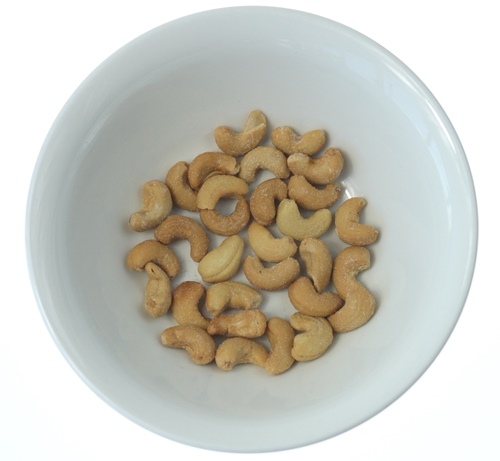
145 mg sodium
Even though they're salted, the salt doesn’t ‘stick’ much to the cashews so they end up surprisingly low in salt by comparison. And as any nut lover knows, a lot of the salt ends up at the bottom of the pack! Lovely flavour, but like beer nuts, high in fat and hard to resist when fresh and crunchy.
Beer nuts (50 g or about 50)
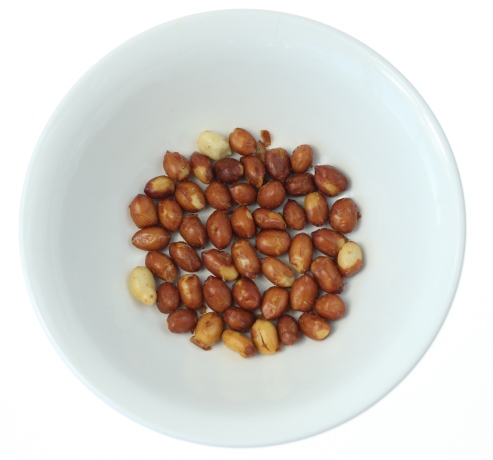
300mg sodium
Nuts have the highest fat count of all these 7 salty snacks - but the fat is a ‘good’ fat with little saturated fat (less than 5 grams or 20 per cent).
Plus they offer minerals, fibre and antioxidants. Eating the papery thin skins is a tasty way to get more fibre.
Bhuja Indian Spicy mix (about 1/2 a cup)
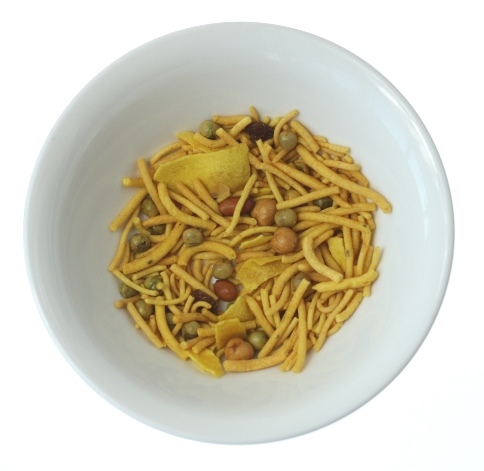
340 mg sodium
With its spiced noodle bits and dried peas along with a few nuts, Bhuja mix looks healthier but it’s just as oily and salty as crisps and corn chips. Often flavoured with chilli, salt and processed curry-flavoured spices, my problem with Bhuja is that it makes you want to drink more. Not good when we already drink so much alcohol.
Potato crisps (about 25)
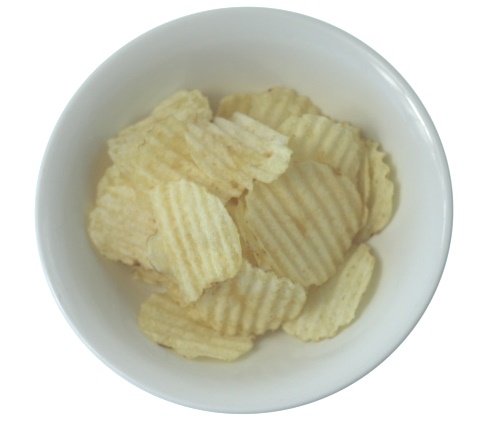
300 mg sodium
Look for the ones cooked in high-oleic sunflower oil or labelled ‘kettle’. You’re still eating fat but it’s a ‘better’ healthier fat, with fewer saturates. Most crisps are fried in palmolein (palm oil), a cheap semi-solid fat which is high in saturates. Lite crisps usually have 30 per cent less sodium but the same fat.
Corn chips (about 20)
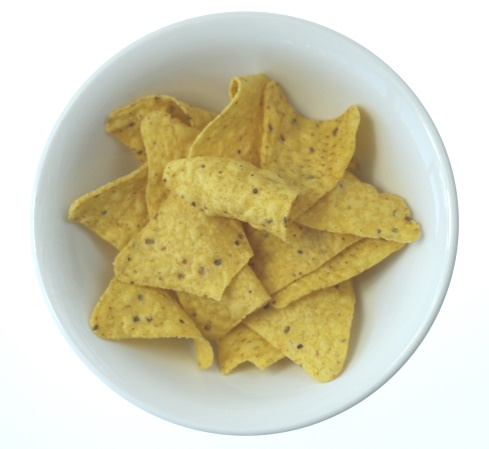
175 mg sodium
Their higher fibre count puts them one notch above potato chips – but only just. They come in at 10 per cent compared to only 1 per cent for crisps. But crisps are higher in potassium, an essential mineral.
Pretzels (about 30 twists)
4 g fat
990 mg sodium
Low fat count of 3 per 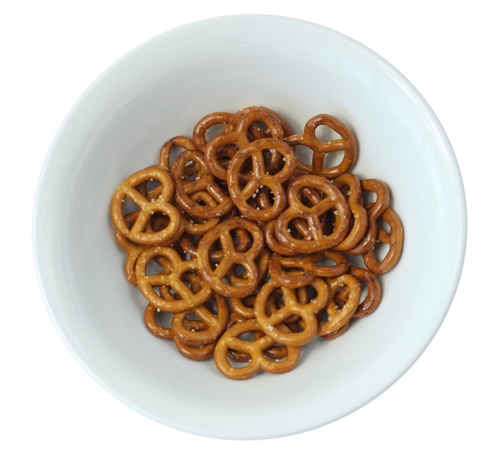
Rice crackers e.g Sakata, Fantastic (about 22)

200 mg sodium
Almost fat-free. Unlike pretzels, the salt (sodium) levels aren't sky high. However, flavoured types (pizza, salsa, BBQ chicken) have up to 50 per cent more sodium than the plain originals so it pays to buy the plainer flavours.
BBQ Shapes, Chicken Crimpy (about 10)
10 g fat
480 mg sodium
With their loud claiming of ‘Baked not fried’, you may think that baked cracker snacks like BBQ 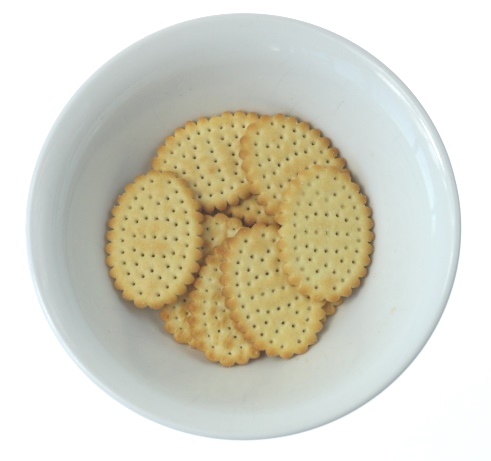
Foodwatch
The Good Stuff
The Boring Stuff
© 2025 Foodwatch Australia. All rights reserved
Website by Joomstore eCommerce





